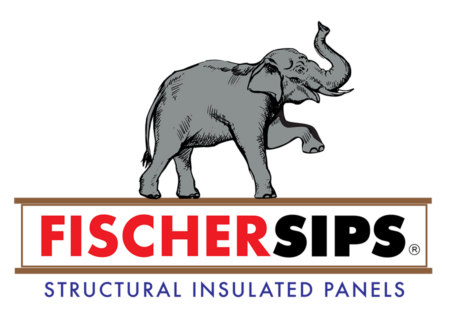As housing prices continue to climb, many homeowners are exploring new ways to build their dream homes without breaking the bank. DIY methods are a great route to keep costs manageable. To understand more about this trend, owner FischerSIPS Damian Pataluna explains how SIPS can benefit DIY homebuilders and the growing popularity of self-built homes.
The Growing Trend of DIY Homebuilding
Why do you think more homeowners are considering building their own homes nowadays?
“The rising cost of hiring a builder is one of the main drivers. With the median home price now north of $400K, many homeowners are seeking ways to stay within their budgets while still achieving their dream home. By doing some of the work themselves, they can save 30-50% on the overall cost of construction. It’s a big motivator for people who want to build but are concerned about the high costs associated with traditional methods.”
The Benefits of Structural Insulated Panels (SIPs) for DIY Builders
What are the main benefits of using structural insulated panels (SIPs) for a DIY home project?
“SIPs essentially form your exterior shell. We take the time to engineer and build each SIP in a factory, which means that once they arrive on-site, the SIPS are ready to assemble. All the framing, sheathing, and insulation are combined into a single panel. This makes the building process much faster and reduces the chance of errors. With prefabrication already done, DIY builders can focus on assembly rather than complicated construction tasks.”
SIPs vs. Traditional Building Materials: Energy Efficiency & Sustainability
How do SIPs compare to traditional building materials in terms of energy efficiency and sustainability?
“When compared to fiberglass insulation and traditional stick framing, SIP homes are 40-60% more energy efficient. They also offer significant sustainability benefits. For example, they use less energy to operate, which lowers your overall carbon footprint. Additionally, the OSB (Oriented Strand Board) used in SIPs comes from young-growth trees, which are immediately replaced after harvesting. This contrasts with the use of old-growth trees in traditional lumber, which are much slower to regenerate.” In addition, because there is OSB on the interior and exterior fully laminated to the foam core, SIP homes are typically 2-3x stronger than a similar stick framed home.
Support and Resources for DIY Builders
What kind of support and resources does FischerSIPS provide to DIY builders using your SIP products?
“We provide a range of resources to assist DIY builders. We have detailed installation videos that guide builders through the process. In addition, our team offers full phone support to help with any questions or challenges during the build. If time allows, we can also provide on-site assistance for those who need it.” There are travel fees associated with this.
Advice for First-Time DIY Homebuilders
What advice would you give to someone who is considering taking on a DIY home-building project for the first time?
“It’s important to realize that building a home is a complicated undertaking. Think of it as one large ecosystem—everything needs to work together, from the foundation to the roofing. It can be overwhelming, but there’s an abundance of information online, especially on platforms like YouTube, to help guide you. However, keep in mind that your initial budget will likely increase by 15-20% once all is said and done. If you’re new to the process, consider hiring professionals for certain tasks like the foundation, plumbing, or electrical work to ensure the job is done safely and correctly.” One of the keys to a successful build with SIPS is to be sure everything is sealed up tight and nailed off properly.
Short- and Long-Term Savings with FischerSIPS
In what ways can using FischerSIPS products contribute to overall savings when building your own home in the short and long term?
“In the long term, FischerSIPS products can lead to substantial energy savings—around 50% more efficient than fiberglass with traditional stick framing. This translates to lower utility bills over time. In the short term, SIPs are more expensive than traditional 2x lumber and fiberglass insulation, but the savings you gain from installing them yourself, combined with their energy efficiency, can make them a great investment.”
Designs That Work Well with SIPs
What types of designs work well with SIPs and would you recommend for a DIY project?
“Simple designs work best with SIPs. A sloping roof with a single slope or straight gables are the easiest to work with. However, roofs with multiple hip lines or complex angles can become more difficult quickly, so we recommend starting with a straightforward design if you’re new to DIY homebuilding.” Although we can design for complex roof lines, it’s not recommended for the typical DIY customer.
What’s Included in a FischerSIPS DIY Kit
What does FischerSIPS include with their DIY kits?
“Our DIY kits include everything you need for your exterior walls, roof, and support members to frame the structure. Additionally, we can provide foundation drawings upon request, which are reviewed and stamped by a structural engineer to ensure everything is up to code.” We also include the SIP Caulk, expanding foam, screws and hot foam scoops needed when working with SIPS.
Building your own home can be an incredibly rewarding experience, both financially and personally. With the support and resources provided by FischerSIPS, DIY homebuilders can reduce costs while constructing an energy-efficient and sustainable home. While there’s a lot to consider in a self-build project, the ability to save money, build sustainably, and create a home that’s truly your own makes the effort well worth it.
